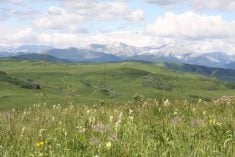SASKATOON — Cattle producers may think they’ve seen a lot of changes in the industry, but there are still more to come, says the manager of a large Canadian feedlot.
“We’re going to go through some serious growing pains,” Dave Plett told the Saskatchewan Cattle Feeders Association annual meeting.
“The players are going to get sorted in the next two or three years,” said Plett, of Western Feedlots of High River, Alta.
Producers who have relied on the tripartite stabilization program to prop up their income will be forced to look closer at their production to reduce costs, he said.
Read Also

Gene editing digs deeper space in Canadian plant breeding
More Canadian research into crop variety development is incorporating gene editing, and one researcher notes that Canada’s regulatory approach to gene editing will help drive innovation
“Producer efficiencies demonstrated in terms of feedlot management are going to be more dramatic in the next two to three years than any time previously,” he said.
Feedlots are already adjusting to changes. At Western, 650 pounds is the minimum weight for calves coming to the feedlot. With the older, larger cattle the feeding period has dropped from 200 days of feed to 140 to 160 days.
Trend toward specialization
There has been a shift to more regional areas of specialization. Southern Alberta has become the region for finishing cattle. Central areas of the province have become specialized in backgrounding cattle.
The feedlots won’t be competing against each other so much as against technology. More and more producers are taking contracts with American packing plants, bypassing local feeders and guaranteeing themselves a final price and market.














